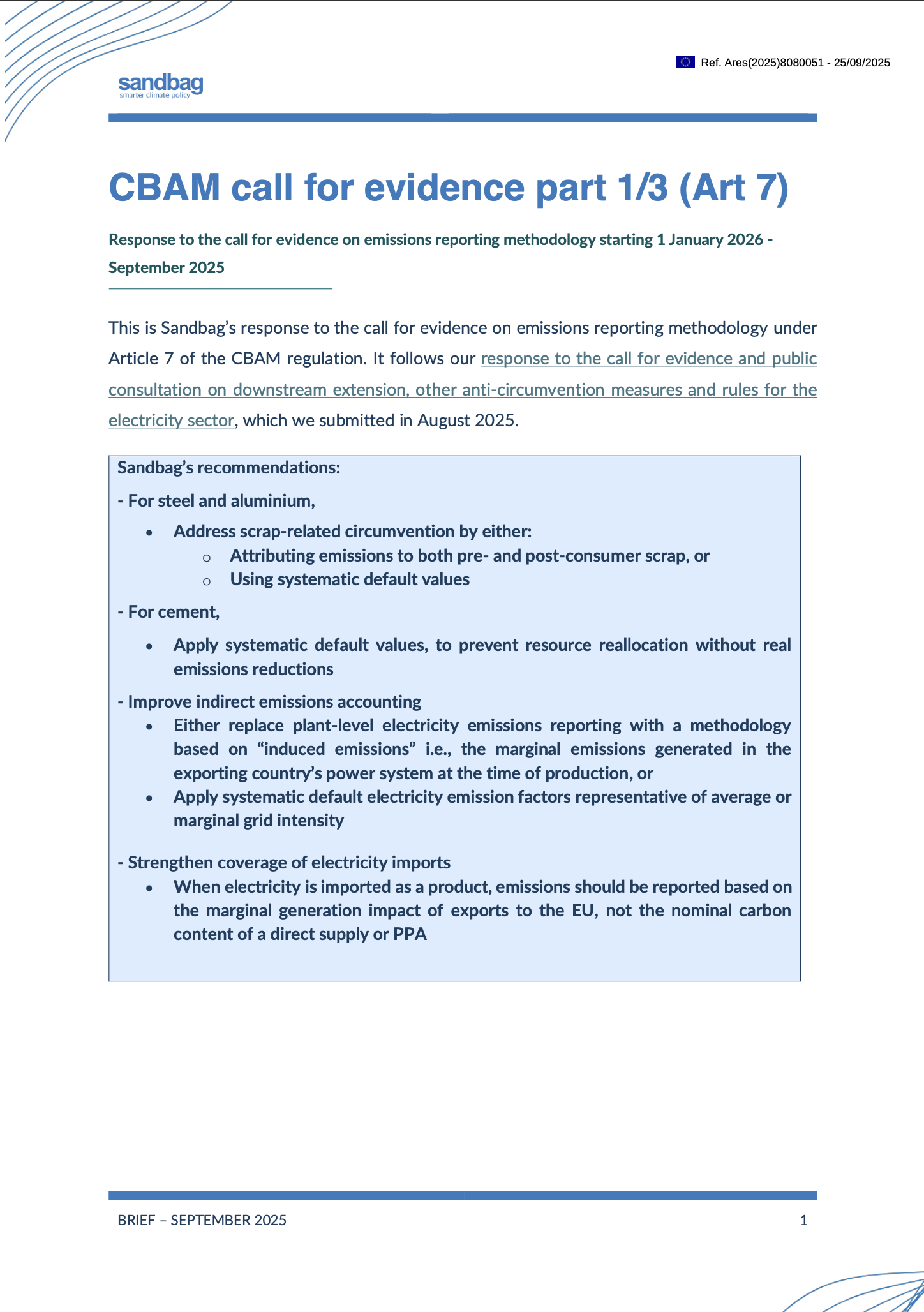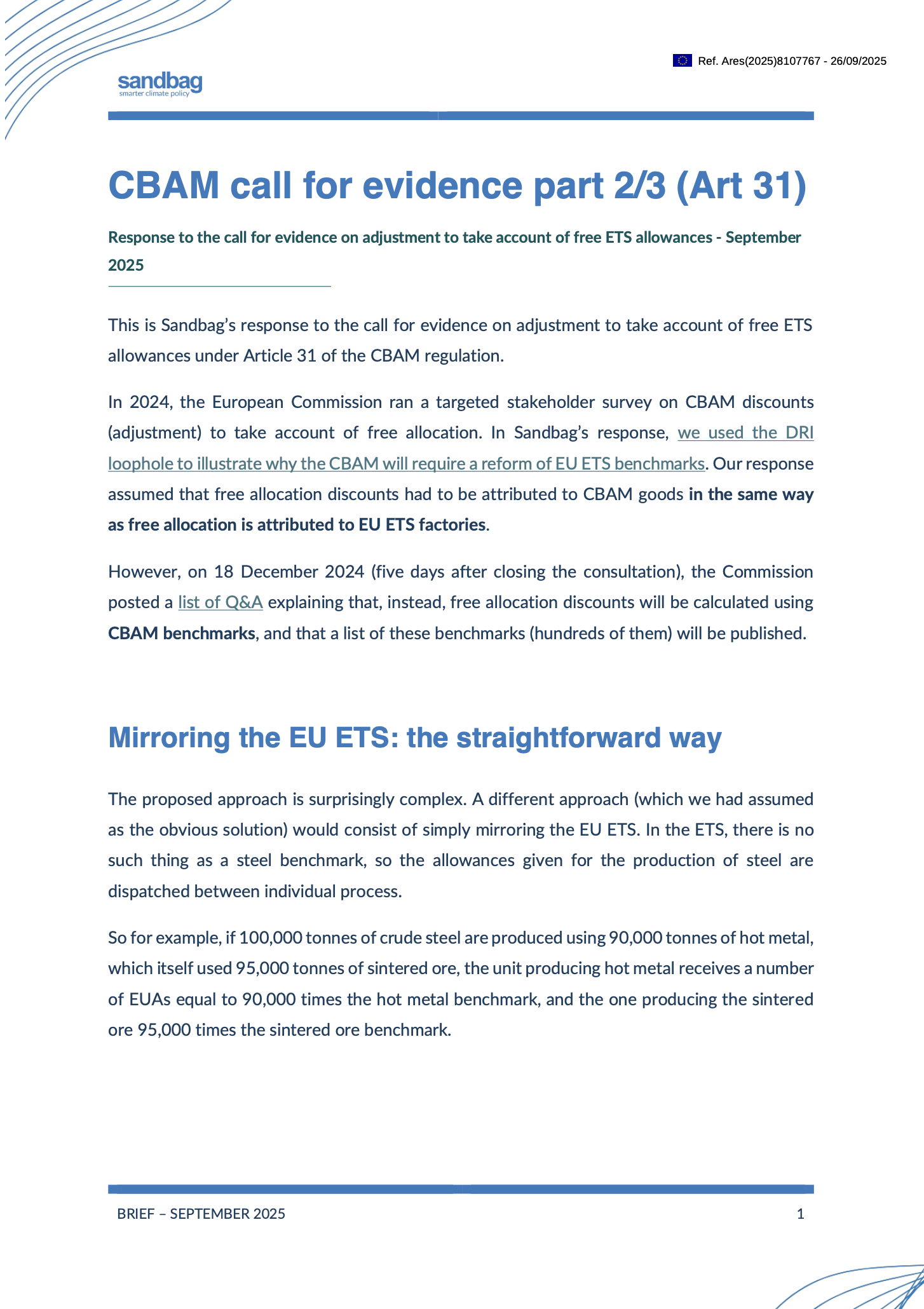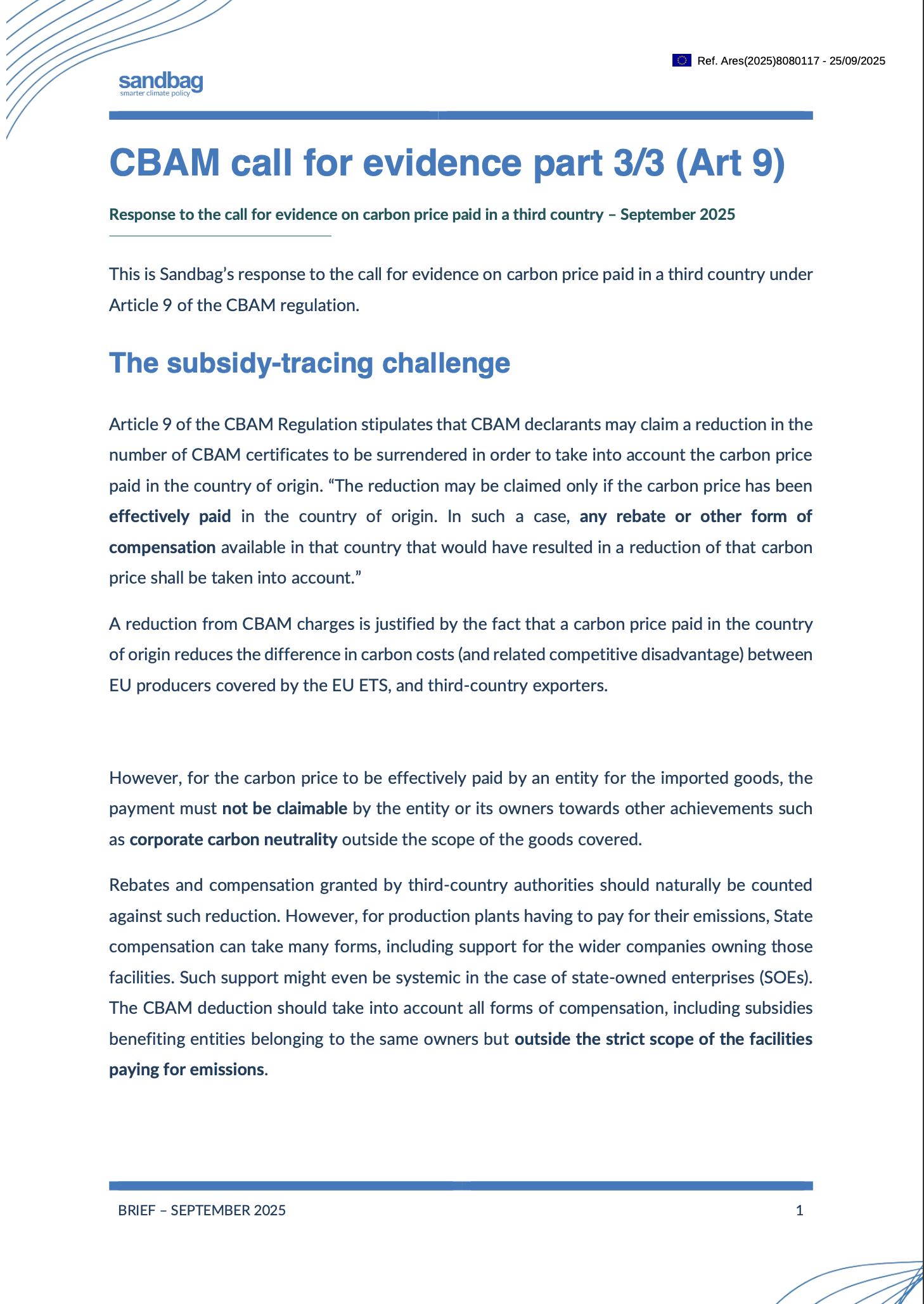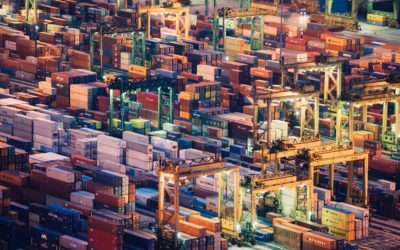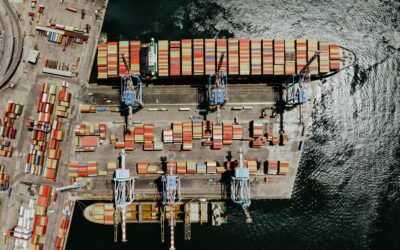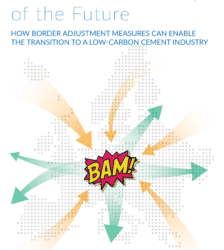The EU’s Carbon Border Adjustment Mechanism (CBAM) aims to ensure that imported goods face the same carbon costs as those produced in Europe.
As CBAM enters its next phase, the European Commission asked for input on three areas:
- Article 7 – Emissions reporting
- Article 31 – Adjustment to take account of free allocation
- Article 9 – Carbon prices paid in third countries
Sandbag responded to each consultation, highlighting risks that could weaken CBAM’s impact and offering practical solutions.
Our main recommendations
- Article 7 (Emissions reporting): Avoid resource shuffling by using induced emissions and systematic default values for steel, aluminium, cement, and electricity imports.
- Article 31 (adjustment for Free allocation): Move to product-based free allocation, ensuring equal treatment between EU and imported goods.
- Article 9 (Carbon price paid abroad): Ensure deductions only apply where carbon prices are paid for the production of goods, taking into account all support received by the production plant even not for carbon.
Related publications
Carbon Border Adjustments in the EU: who, what, when, why and how?
The public consultation on the Carbon Border Adjustment Mechanism is coming to a close. The...
The A-B-C of BCAs
In the context of renewed debate on the introduction of Border Carbon Adjustments (BCAs) in the EU. What issues are likely to arise with this introduction? What are the possible ways forward? This report gives an overview of the issues surrounding the introduction of BCAs in the EU.
New EU border tariffs will boost low-carbon cement
31st January, Brussels - As the EU debates whether to raise border tariffs on cement, new research...

